| Fire & Sword:
Scenario Preview, Part Five
By Mike Bennighof, Ph.D.
November 2024
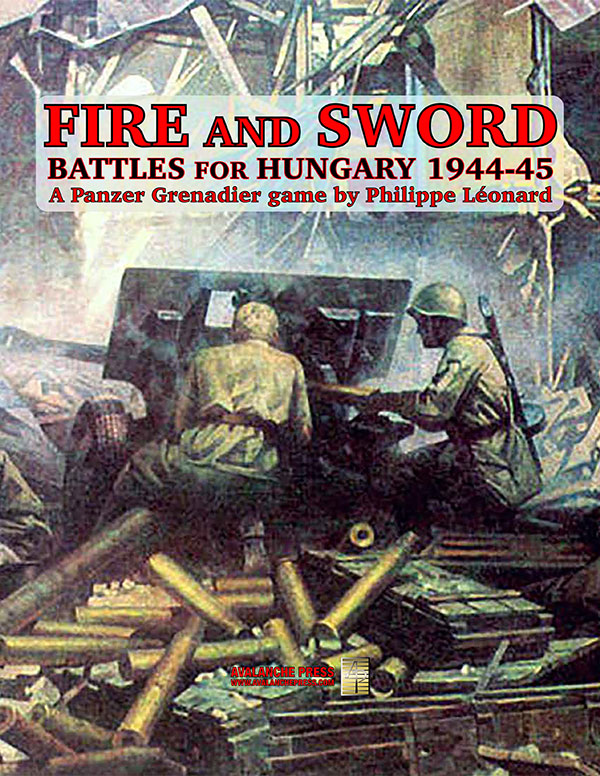 It’s an odd feeling, to know something that no one else knows, yet you wish that they did. I am, as I write this, the only person in existence to know just how spectacular a game we have in Panzer Grenadier: Fire & Sword. It’s a small thing, on the cosmic scale, but I find that I lack the skills to fully convey this message. Fire & Sword has been hotly anticipated, at least among a small knot of hard-core Panzer Grenadier players. And they have the right idea. It’s an odd feeling, to know something that no one else knows, yet you wish that they did. I am, as I write this, the only person in existence to know just how spectacular a game we have in Panzer Grenadier: Fire & Sword. It’s a small thing, on the cosmic scale, but I find that I lack the skills to fully convey this message. Fire & Sword has been hotly anticipated, at least among a small knot of hard-core Panzer Grenadier players. And they have the right idea.
Our topic is the Soviet drive across Hungary to the gates of Budapest in late 1944, and the subsequent siege of the Hungarian capital. At this point in the war, the Germans had already lost, though their Supreme Leader insisted on continuing the fight (given the crimes of the Nazi regime, surrender wasn’t an enticing option). But their armies retained the ability to fight, and the munitions and equipment to challenge the oncoming Red Army, at least at the tactical level.
That leads to a variety of situations for designer Philippe Léonard to translate into game form. Philippe fully grasps the storytelling potential of Panzer Grenadier, and wields it to spin an epic tale of bravery and desperation, victory and futility. The Germans and Hungarians fling police, prisoners and punks into the front lines, but also potent panzers and paratroopers.
Let’s have a look at the fifth chapter, the tale of the Soviet drive on Székesfehérvár (say that five times fast).
See the rest of the preview here:
• Scenario Preview, Part One
• Scenario Preview, Part Two
• Scenario Preview, Part Three
• Scenario Preview, Part Four
• Scenario Preview, Part Six
• Scenario Preview, Part Seven
Chapter Five
On to Székesfehérvár
In late November, the 3rd Ukrainian Front crossed the Danube well south of Budapest near Mohács and exploited northward toward the gap between Lake Balaton and Lake Velence, west of Budapest on the road to Vienna. The two lakes made convenient defensive barriers, and defensive positions, the Margit Line, had been built between them by the German 153rd Field Training Division, Hungarian construction units and details of volunteers. A large part of the area was a vast moorland, a kind of steppe covered with high brush and vegetation and crisscrossed by creeks, known as the puszta.
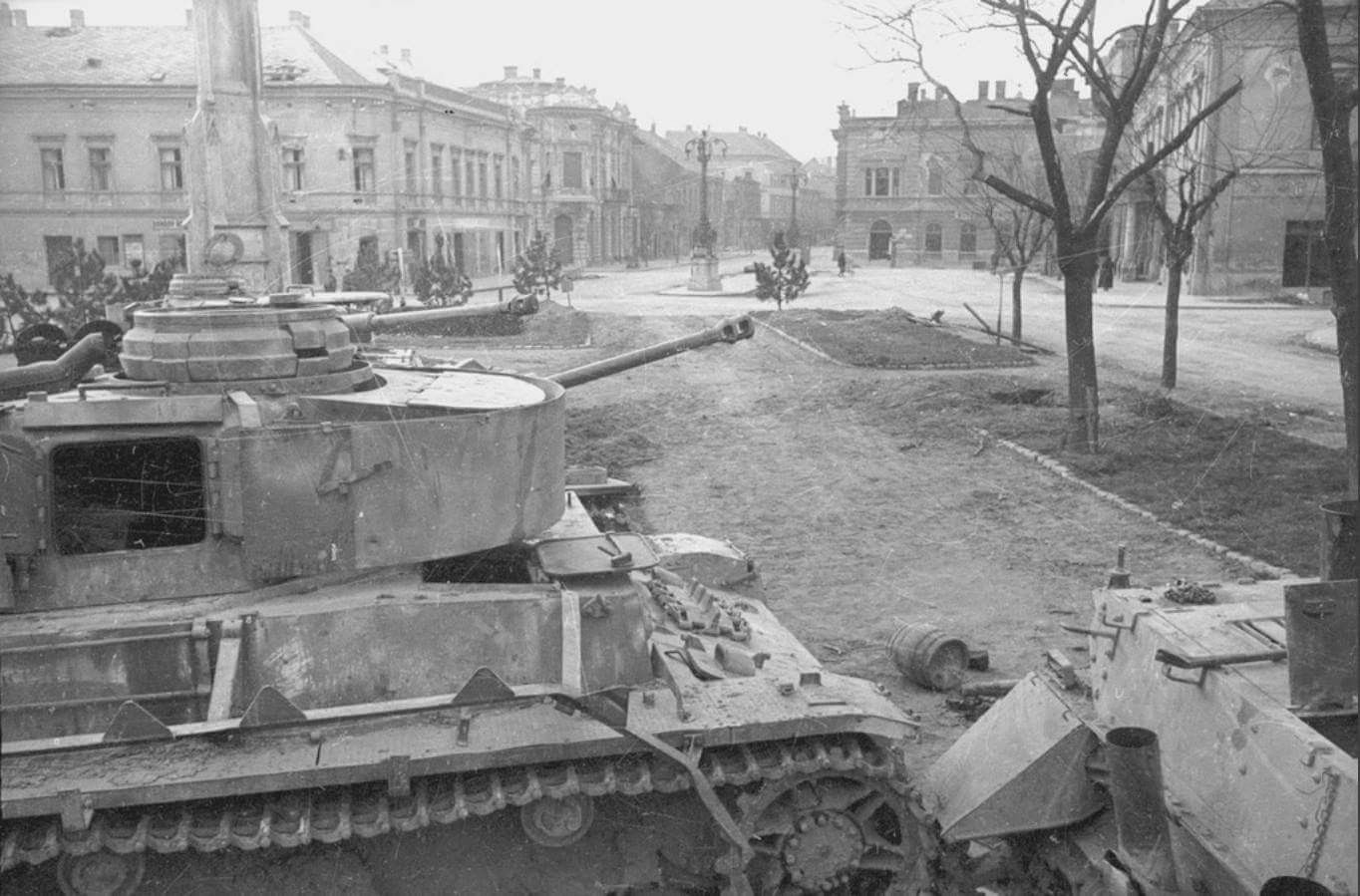
German tanks in Székesfehérvár, late 1944.
On 7 December, the tired forces of the German Fretter-Pico Army Detachment withdrew behind that incomplete trench line after weeks of continuous fighting against the advancing 3rd Ukrainian Front. However, the Soviet attacks did not stop there, and the Margit Line would soon be torn wide open. The city of Székesfehérvár (Stuhlweißenburg in German) stood in the way of a Soviet advance on Budapest through the western “back door” approach.
Scenario Twenty
Death of Heroes
27 November 1944
Pécs, Hungary
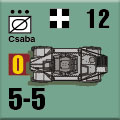 Strong Soviet forces, the 32nd Independent Guards Mechanized Brigade (its 52nd Tank Regiment had 24 T34/85 medium tanks and ten OT34 flamethrowers) and the 53rd Motorcycle Regiment with a total of 40 AFVs and practically no infantry, pushed forward during the morning via Németbóly to the main road leading to Pécs (Fünfkirchen in German). They took Szederkény and crossed the main line of resistance, facing weaker security positions in the Axis rear areas. One company from the 52nd Tank Regiment together with a motorized rifle company moved out in the direction of Pécs. Their mission was to break through the defenses in the course of the night and capture the town on the march. The German-Hungarian troops concentrated along the highway leading from Szederkény to Pécs, in the area of Point 208 (five kilometers southeast of Pécs). Strong Soviet forces, the 32nd Independent Guards Mechanized Brigade (its 52nd Tank Regiment had 24 T34/85 medium tanks and ten OT34 flamethrowers) and the 53rd Motorcycle Regiment with a total of 40 AFVs and practically no infantry, pushed forward during the morning via Németbóly to the main road leading to Pécs (Fünfkirchen in German). They took Szederkény and crossed the main line of resistance, facing weaker security positions in the Axis rear areas. One company from the 52nd Tank Regiment together with a motorized rifle company moved out in the direction of Pécs. Their mission was to break through the defenses in the course of the night and capture the town on the march. The German-Hungarian troops concentrated along the highway leading from Szederkény to Pécs, in the area of Point 208 (five kilometers southeast of Pécs).
Conclusion
The Soviet armored group pushed westwards until a Hungarian Gendarme knocked out a T34 (probably from the 53rd Motorcycle Regiment) approaching on the road from Szederkény. German 88mm anti-aircraft guns claimed the next twelve AFVs that followed, and left three more immobilized on or next to the road. German ground-attack aircraft also joined in against Soviet tanks southeast of Pécs making rapid progress towards the town.
Soviet reports mention heroic acts by the tankers when their tanks, suffering from multiple hits and bursting in flames, went on to crush the German guns and their crews under their tracks. Finally, having overcome the improvised German defenses in front of Pécs, as well as by the weak Hungarian forces that sealed off the valleys of the Meksek Mountains, the tanks of the Soviet 32nd Independent Guards Mechanized Brigade and the 53rd Motorcycle Regiment reached the county seat at nightfall. The Soviet brigade had covered 40 kilometers in just three days.
The Soviet High Command considered its “independent” armored units second-rate and expendable. They often operated refurbished, obsolete, or even captured machines. The battle for Pécs disproved that assumption.
Notes
It’s an unusual scenario, with a long, narrow battlefield with fighting all along it. The Soviets are on the attack, against the usual unusual mix of Axis units (who have an 88mm anti-aircraft gun, which will be useful). It’s a weak defense otherwise, but the Red Army has to achieve a lot in order to win.
Daily Content includes no AI-generated content or third-party ads. We work hard to keep it that way, and that’s a lot of work. You can help us keep things that way with your gift through this link right here.
Scenario Twenty-One
On the Lakeshore
3 December 1944
Siófok, southern shore of Lake Balaton, Hungary
 For the past several days, 3rd Ukrainian Front forces had steadily pushed the Axis troops facing them northward. The Axis front began to crumble as shattered units became overextended and could not hold their sectors.Soviet units poured through the gaps in the defenses, hard on the heels of the withdrawing Axis as they sought to reach Lake Balaton and Székesfehérvár to prevent the Germans and Hungarians from making a stand on the Margit Line. For the past several days, 3rd Ukrainian Front forces had steadily pushed the Axis troops facing them northward. The Axis front began to crumble as shattered units became overextended and could not hold their sectors.Soviet units poured through the gaps in the defenses, hard on the heels of the withdrawing Axis as they sought to reach Lake Balaton and Székesfehérvár to prevent the Germans and Hungarians from making a stand on the Margit Line.
The Axis side formed Group Kirchner from the remnants of the LVII Panzer Corps and the Hungarian II Corps. The defenders fell back into the Eugen Blocking Position, a thin line of scanty field fortifications, behind the Sió Canal between Siófok and Simontornya. By 3 December, German ant-aircraft gunners began a series of heavy battles with the troops of the 7th Guards Airborne Division supported by self-propelled artillery, near Balaton-Kiliti, on the southern bank of the canal.
Conclusion
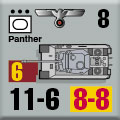 The Soviets launched a daring attack from the south, on the highway to Siófok. Alerted by the Soviet approach, the Germans had flung a ramshackle group of defenders into the breach, including elements of two panzer divisions (1st and 23rd), a machine-gun battalion, Tatar and Hungarian ethnic German “volunteers” of the Armed SS party militia and a handful of Air Force anti-aircraft guns. The Soviets launched a daring attack from the south, on the highway to Siófok. Alerted by the Soviet approach, the Germans had flung a ramshackle group of defenders into the breach, including elements of two panzer divisions (1st and 23rd), a machine-gun battalion, Tatar and Hungarian ethnic German “volunteers” of the Armed SS party militia and a handful of Air Force anti-aircraft guns.
The defenders manned a bridgehead on the south bank of the Sió Canal, and the Soviets flung desperately-fighting penal companies at it, backed by assault guns. They eventually collapsed the German bridgehead, and at noon, once the Soviet assault guns reached the canal, German pioneers blew up the bridge. Both sides then engaged in a furious firefight at point-blank range across the canal. Heavy fighting raged along the Eugen Position and only ceased when darkness fell. The Soviets captured Siófok on the following day after bloody street fights.
Notes
Over the years, Panzer Grenadier has highlighted some truly terrible units of the Armed SS party militia. None of them have been quite as bad at the Tatar Brigade and the 31st SS Division. They provide about half of the German player’s infantry, so it’s going to be tough to not use them, yet that’s exactly where the Soviet player will strike.
Scenario Twenty-Two
Panzerschrek
4 December 1944
Mezökomárom, Hungary
 South-east of Siófok, elements of the Soviet 7th Guards Airborne Division had crossed the Sió canal and entered the village of Mezökomárom. Their battalion-sized force pressed on, making rapid progress and reaching Lajoskomárom in the early morning hours. At that point, the 23rd Panzer Division’s armored battle group, reinforced with self-propelled howitzers and some anti-aircraft guns, counter-attacked from the north and east. South-east of Siófok, elements of the Soviet 7th Guards Airborne Division had crossed the Sió canal and entered the village of Mezökomárom. Their battalion-sized force pressed on, making rapid progress and reaching Lajoskomárom in the early morning hours. At that point, the 23rd Panzer Division’s armored battle group, reinforced with self-propelled howitzers and some anti-aircraft guns, counter-attacked from the north and east.
Conclusion
At 0800, the German reconnaissance battalion, reinforced with four tanks, engaged the Soviets who had entered Mezökomárom. The reconnaissance force pushed the Soviets back into a small bridgehead in the southern part of Mezökomárom. The remnants of the 24th Infantry Regiment of the 20th Honvéd Infantry Division and the artillerymen of the 7th Honvéd Artillery Battalion also joined the Germans. Nevertheless, soldiers from the 1st Battalion of the Soviet 29th Guards Airborne Regiment using captured Panzerfaust anti-tank rockets successfully halted the German armored counterthrust. Although only one or two of the 10 to 15 combat vehicles were actually hit, the mere presence of these handheld close-combat weapons deterred the Germans from continuing their attack.
Notes
The Germans are on the attack (with some Hungarian help), with advantages in both morale and numbers. But the Soviets have those Panzerfäuste, which will make things a bit sticky for those German tanks and Hungarian assault guns.
Scenario Twenty-Three
Unable to Resist
6 December 1944
Enying, Hungary
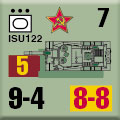 Despite German counter-attacks, the Soviet 21st Rifle Corps continued to expand its bridgehead across the Sió canal at Metzökomárom. They faced a motley Axis force including the 1st Panzer Division’s palace guard company, a machine-gun battalion and the remnants of the Hungarian 24th Infantry Regiment (which had lost most of its soldiers, but somehow held onto many of its heavy weapons). The Hungarians would hold the town of Enying to keep a retreat route open for the Germans, but by 0900 the leading Soviet elements had already entered the outskirts. Despite German counter-attacks, the Soviet 21st Rifle Corps continued to expand its bridgehead across the Sió canal at Metzökomárom. They faced a motley Axis force including the 1st Panzer Division’s palace guard company, a machine-gun battalion and the remnants of the Hungarian 24th Infantry Regiment (which had lost most of its soldiers, but somehow held onto many of its heavy weapons). The Hungarians would hold the town of Enying to keep a retreat route open for the Germans, but by 0900 the leading Soviet elements had already entered the outskirts.
Conclusion
Supported by ground-attack aircraft, the Soviet paratroopers overran the older soldiers of the German machine-gun battalion and the escort company and entered Enying. Joined by four tanks, the Germans re-grouped and went back into the town, aided by a handful of Hungarians. The Axis attack cleared the town, but then the Soviets ejected them again before the Germans crept back into the shattered buildings. The front briefly stabilized, now running through the middle of Enying.
Notes
It’s just a small scenario; the German palace guard is pretty tough, the Hungarians not so much, and they’re facing off with Soviet Guards paratroopers. The Soviets have to do a lot to win, but . . . they’re Soviet Guards paratroopers.
Scenario Twenty-Four
Unwelcome Visitors
8 December 1944
Polgárdi, southwest of Székesfehérvár, Hungary
 Under increasing pressure, the Axis troops had withdrawn to the Margit Line, despite its name merely a series of a few scattered strongpoints in the villages between Siófok and Székesfehérvár and prone to infiltration by Soviet troops. The villagers found themselves not just exposed to war but also to harassment and stealing by German soldiers: fattened swine, ducks, geese, poultry and mainly wine. The Germans were not necessarily welcome and Soviets sometimes found unexpected help. Local guides helped them achieve several penetrations. Under increasing pressure, the Axis troops had withdrawn to the Margit Line, despite its name merely a series of a few scattered strongpoints in the villages between Siófok and Székesfehérvár and prone to infiltration by Soviet troops. The villagers found themselves not just exposed to war but also to harassment and stealing by German soldiers: fattened swine, ducks, geese, poultry and mainly wine. The Germans were not necessarily welcome and Soviets sometimes found unexpected help. Local guides helped them achieve several penetrations.
On 7 December, taking advantage of thick fog, Soviet troops infiltrated through the positions of the II Battalion of the Hungarian Infantry Central Small Arms School and captured the southern part of Polgárdi. During the same day, the Soviets surrounded various Axis units in the town. On 8 December, the 1st and 23rd Panzer Divisions attacked from the north and east to retake Polgárdi.
Conclusion
At 0630, 23rd Panzer Division’s battle group moved out from the east against Polgardi, while that of 1st Panzer Division entered Polgardi from the north and west. Just outside the town, Soviet tank hunter/killer teams moved against the German tanks. The Tigers started a frontal attack, dashing across a bridge across a creek at the western entry of the town. This feint assault drew the Soviets’ attention from the flanking movement, carried out from the east. The Royal Tigers, attacking in a wedge formation, quickly destroyed the Soviet anti-tank guns along the perimeter and took many prisoners.
The Soviets eventually offered stout resistance, especially along the main highway. Amid tough fighting for every building, but the Soviets gradually fell back and some of the defenders even fled in panic to the south. Large amounts of weapons and equipment remained behind in German hands. A strong Soviet infantry attack conducted in the afternoon across the railway line collapsed in the face of combined fires from the tanks, personnel carriers and infantry. One hundred dead Soviet soldiers had been left behind, the encircled German/Hungarian units relieved and the Margit Line restored.
Notes
This one includes Royal Tigers, for which the Soviets don’t have much of an answer outside of close assaults by reluctant troops. It’s a dense, close-action scenario with tanks and infantry fighting it out hex by hex.
Scenario Twenty-Five
Bad Weather in the Moorlands
9 December 1944
South of Székesfehérvár, Hungary
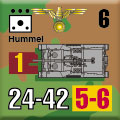 As 3rd Ukrainian Front approached the Margit Line between Lake Balaton and Lake Velence, Axis resistance stiffened while the overextended Soviet lines and their tired troops called for a pause. The Soviet 4th Guards Army consolidated their positions and regrouped while fighting to improve their jumping-off positions for the next offensive. On 8 December, 23rd Panzer Division drove off battalion-strength Soviet attacks but the Pötölle hamlet, a kind of outpost in the moorland, fell into Soviet hands. On 9 December, Panzer Grenadier Regiment 126 received orders to retake the lost ground. Before they could do that, the Soviets attacked at 0600 hours and entered their positions. As 3rd Ukrainian Front approached the Margit Line between Lake Balaton and Lake Velence, Axis resistance stiffened while the overextended Soviet lines and their tired troops called for a pause. The Soviet 4th Guards Army consolidated their positions and regrouped while fighting to improve their jumping-off positions for the next offensive. On 8 December, 23rd Panzer Division drove off battalion-strength Soviet attacks but the Pötölle hamlet, a kind of outpost in the moorland, fell into Soviet hands. On 9 December, Panzer Grenadier Regiment 126 received orders to retake the lost ground. Before they could do that, the Soviets attacked at 0600 hours and entered their positions.
Conclusion
The Germans immediately counterattacked but failed. At 1430, Hill 142 west of Tác fell, while the Germans attacked Pötölle 30 minutes later with the support of six tanks. Yet another Soviet attack ran into the fire of the Panzer Grenadiers, their tanks and armored carriers, and anti-aircraft guns from the 15th Flak Division. The Soviets began a rapid retreat with the Germans in hot pursuit. The Germans recaptured Pötölle, but the field replacement companies that had been incorporated into their ranks were almost wiped out while the Panzer Grenadier companies lost half of their manpower.
Notes
The burden on the attack is on the Soviets, who are going to find themselves stretched to meet all of their objectives. There aren’t that many Germans, but they have stout morale and leadership, if not a whole lot of weaponry.
Scenario Twenty-Six
The Margit Line
10 December 1944
West of Séregélyos, Hungary
 On 9 December, the Soviets pressed forward from Séregélyos to breach the defenses of the Margit Line. Their troops advanced to the north-west and reached the railway line at the small village of Belsöbáránd. Since the long gully just to the east of the village had been turned into a part of the Margit Line, the Soviets immediately made good use of the position to entrench themselves. On the next day German infantry supported by tanks counterattacked from the west, making a bold dash to recapture the positions established at Belsöbáránd. On 9 December, the Soviets pressed forward from Séregélyos to breach the defenses of the Margit Line. Their troops advanced to the north-west and reached the railway line at the small village of Belsöbáránd. Since the long gully just to the east of the village had been turned into a part of the Margit Line, the Soviets immediately made good use of the position to entrench themselves. On the next day German infantry supported by tanks counterattacked from the west, making a bold dash to recapture the positions established at Belsöbáránd.
Conclusion
The Germans recaptured about half of the ground they had lost, taking Külsöbáránd and most of the positions that had been previously lost in less than one hour. Due to stout resistance, the German attack halted short of Points 123 and 124. On the right flank the Germans halted short of Belsöbáránd, too. Even so, the partially successful attack allowed them to reoccupy this sector of the Margit Line. The Germans took some 90 prisoners and captured a sizeable amount of booty, but even so a gap opened up west of Belsöbáránd when Hungarian troops failed to occupy the positions in time.
Notes
This is a relatively small scenario, just one map board though there’s a fair density of troops and such. The Germans are on the attack, with tank support against a well-prepared Soviet defense that’s lacking in anti-tank capability. That means the fighting’s going to be up close and personal.
And that’s all for Chapter Five. Next time, it’s Chapter Six.
You can order Fire and Sword right here.
Sword of Fire
Fire & Sword
Stalin’s Tanks
Eastern Front Artillery
Retail Price: $145.96
Package Price: $120.00
Gold Club Price: $96.00
Take up the Sword of Fire Here.
Sign up for our newsletter right here. Your info will never be sold or transferred; we'll just use it to update you on new games and new offers.
Mike Bennighof is president of Avalanche Press and holds a doctorate in history from Emory University. A Fulbright Scholar and NASA Journalist in Space finalist, he has published an unknowable number of books, games and articles on historical subjects.
He lives in Birmingham, Alabama with his wife and three children; he misses his dog, Leopold.
Daily Content includes no AI-generated content or third-party ads. We work hard to keep it that way, and that’s a lot of work. You can help us keep things that way with your gift through this link right here. |
